Blog Post #8 - A Matter of Selection - Leah Chiponis
Blog Post #8 - A Matter of Selection
- a) Which part (anatomy) or characteristic of the Brassica oleracea plants seems to exhibit the most variation (greatest number of different forms)?
It is both the leaves and the certain plant that is growing as well. I was in the garden with a few of my friends from the same class and we noticed that depending on the weather and what the environment is like for each plant, the leaves are constantly varying in size along with the plant itself, reproducing and growing as well.
b) Which part or characteristic of the Brassica oleracea plants seems to show the greatest range of variation (biggest difference between one extreme and its opposite)? Use and include data collected from multiple measurements to support your answer.
The parts of the Brassica Oleracea plants that have the greatest range of variation is probably the leaves. There are definitely leaves that are tiny, and some that are huge, mainly depending on how well the plant actually developed and how big the plant is supposed to turn out. We measured the leaves of Kale, Collard, and Cabbage to show evidence of how completely different the measurements are, like the Collard and Cabbage.
Kale: leaf width: 13 centimeters | leaf length: 13 1/2 centimeters
Collard: leaf width: 15 centimeters | leaf length: 20 centimeters
Cabbage: leaf width: 8 1/2 centimeters | leaf length: 11 centimeters
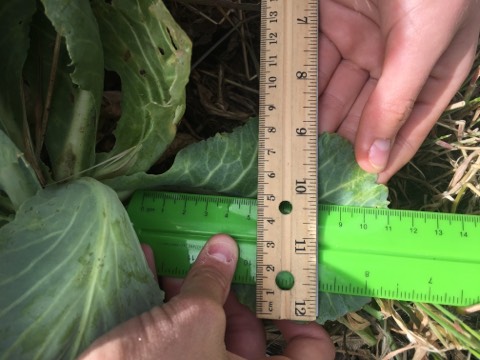
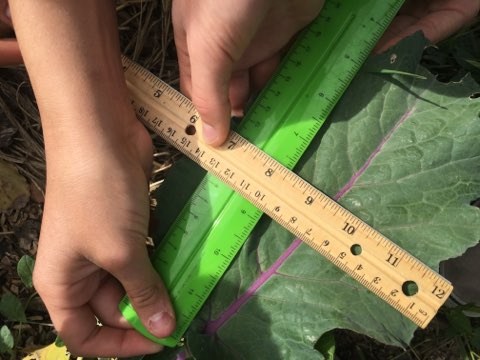
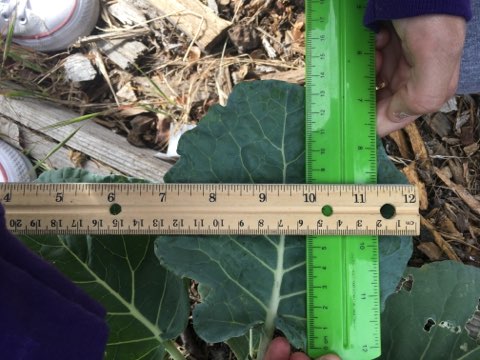
The parts of the Brassica Oleracea plants that have the greatest range of variation is probably the leaves. There are definitely leaves that are tiny, and some that are huge, mainly depending on how well the plant actually developed and how big the plant is supposed to turn out. We measured the leaves of Kale, Collard, and Cabbage to show evidence of how completely different the measurements are, like the Collard and Cabbage.
Kale: leaf width: 13 centimeters | leaf length: 13 1/2 centimeters
Collard: leaf width: 15 centimeters | leaf length: 20 centimeters
Cabbage: leaf width: 8 1/2 centimeters | leaf length: 11 centimeters
2) Using the terms that follow, explain why you think there is so much variability in the domestic forms of Brassica oleracea: traits, selective breeding, artificial selection, genes, descent with modification, natural variations, mutations
There is a large amount of variability in Brassica oleracea due to traits because of how all of the plants have different and unique parts to them and none of the others are technically exactly the same. Some may be planted and are supposed to have the same outcome, but one may have smaller leaves, or one of the plants wouldn't develop as well as the other. The sizes, and characteristics of these plants vary and each have distinct traits, allowing people to differentiate between the plants, whether the outcome is supposed to be the same or not.
There is also a large amount of variability in Brassica Oleracea through selective breeding. This is because through selective breeding, usually it is based on the phenotype and the plant would want to keep reproducing, but with the best phenotypes so its offspring can survive and can thrive. This is constantly changing because environments change, and plants must adapt. This creates a variety of different plants that can all survive in different conditions, and still appeal to the other plants in order to keep producing plants that will survive.
There is a large amount of variability in Brassica Oleracea as well through artificial selection. This is because embryos are being made with certain traits of one's liking. It is unnatural, but it creates a variety because those who make these embryos and seeds choose certain traits, and other people can choose different traits, allowing people to create organisms with all sorts of favorable characteristics. Depending on the creator, they are able to create an organism to be however they would like it to be, with all sorts of different traits, but people create these embryos and seeds and everyone creates something different, and something of their choice, creating a large variety in the world.
A large variability in Brassica Oleracea is also shown through genes. This is because all plants have different genes, and although some are supposed to have the same turnout, plants can have mutations, or a different trait than that other plant. One of the codons on one plant might be different than another, causing a different outcome, big or small, depending on what protein is being coded. Genes produce the traits for these organisms and like I stated earlier, each plant has at least one distinct part (even if it is tiny) causing a variety of brassica.
Through descent with modification, there is a large variability in Brassica Oleracea because as traits and characteristics are passed down to offspring through heredity, plants can turn out very differently. This is because if two plants somehow merged, they would create a plant with half the traits of one plant, and half the traits of the other. With all of the different types of Brassica Oleracea in the world, there can be so many different combinations and outcomes. There can be a large variety of different kinds of hybrids with our plants that might look unusual, but would show how all of the plants vary due to heredity.
There is also a large variability in Brassica Oleracea through natural variations. This is because of how it represents genetic diversity. If organisms have natural variations, while changing, if breeded with another plant, it will increase a variety of different plants. Through natural variation, it isn't harmful, but could be good for the organism. It will expose the organism to different things, and could quite possibly help the plant if it has to adapt in different conditions. This is why the changes in natural variation creates a variety in Brassica Oleracea, but it depends, as sometimes it can help a plant, but other times, it could put the life of a plant at risk.
Finally, through mutations, it is shown that there is a large variability of Brassica Oleracea included. This is because of how mutations can change the genes and create an unusual part of the genes. This may effect the phenotype, and genotype, but it creates variety because if all plants are supposed to turn out the same, a mutation can show the difference between itself and another plant. If it keeps on reproducing, that plant is increasing the chances of its new plants getting the mutation. This spreads the change of genes, so that plants don't always have the same outcome. Although it may be seen through our Brassica Oleracea, it is part of all living things including humans, animals, and other organisms.
3) Which part (anatomy) of the Brassica Oleracea plants seems to be most consistently the same in all of the examples in our garden, regardless of how extreme the differences between other parts of the same plants may be? Why do think this is so? Again, use and include data collected from multiple measurements to support your answer.
In the anatomy included in our Brassica Oleracea, the stem widths seem to consistently be the same in most of the plants. I think this because even though they will continuously grow longer, the widths mainly stayed the same and were very similar when comparing. This is because or how the width of the collard stem is 0.4 centimeters, the cabbage stem's width was about 2.5 centimeters, the brusselsprout's stem width is 0.6 centimeters, and the stem of the kale plant was 0.8 centimeters wide. Although the cabbage plant showed a much larger stem width, most of these plants had similar stem widths and throughout this whole experiment, they have mainly stayed the same.
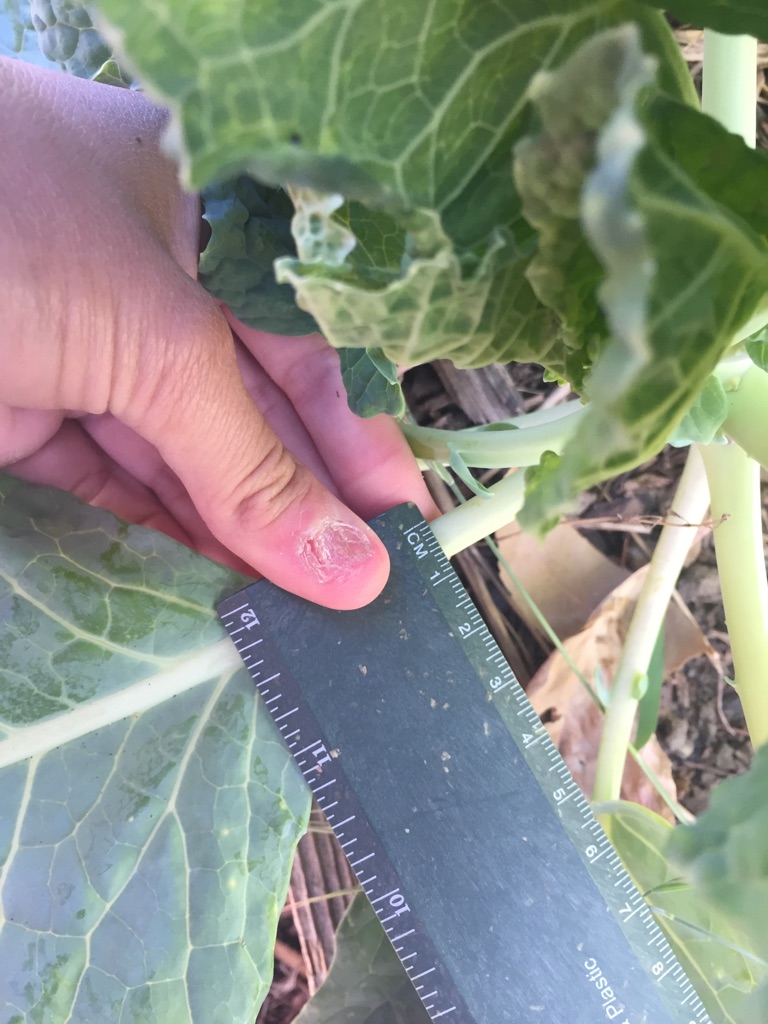
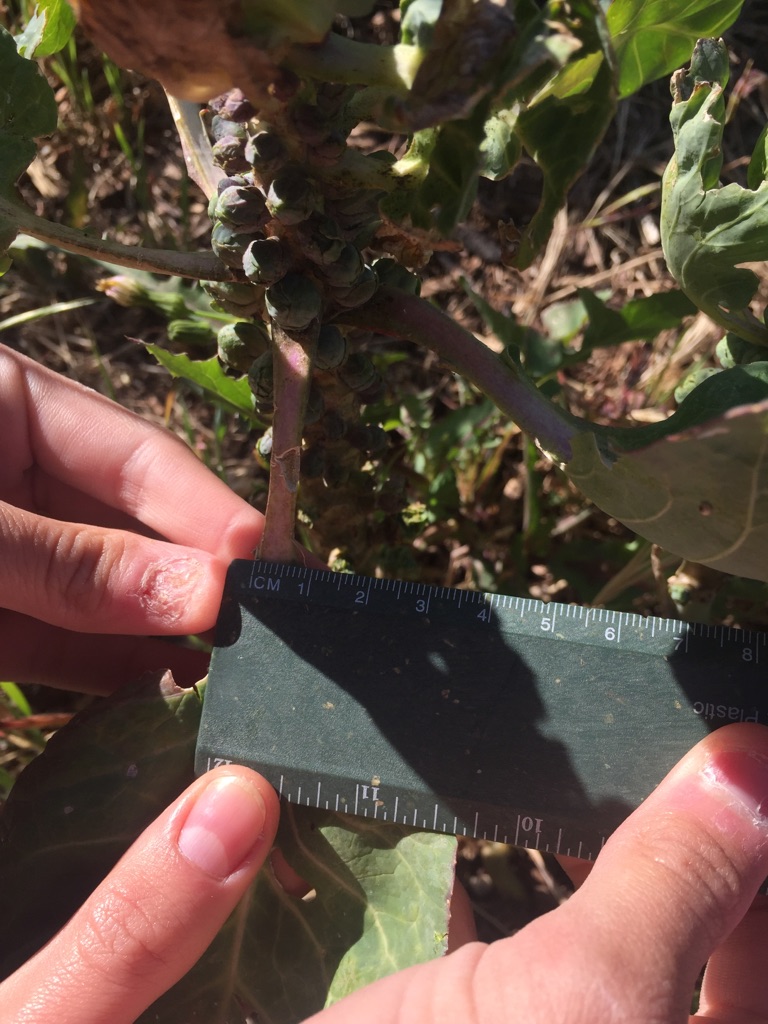

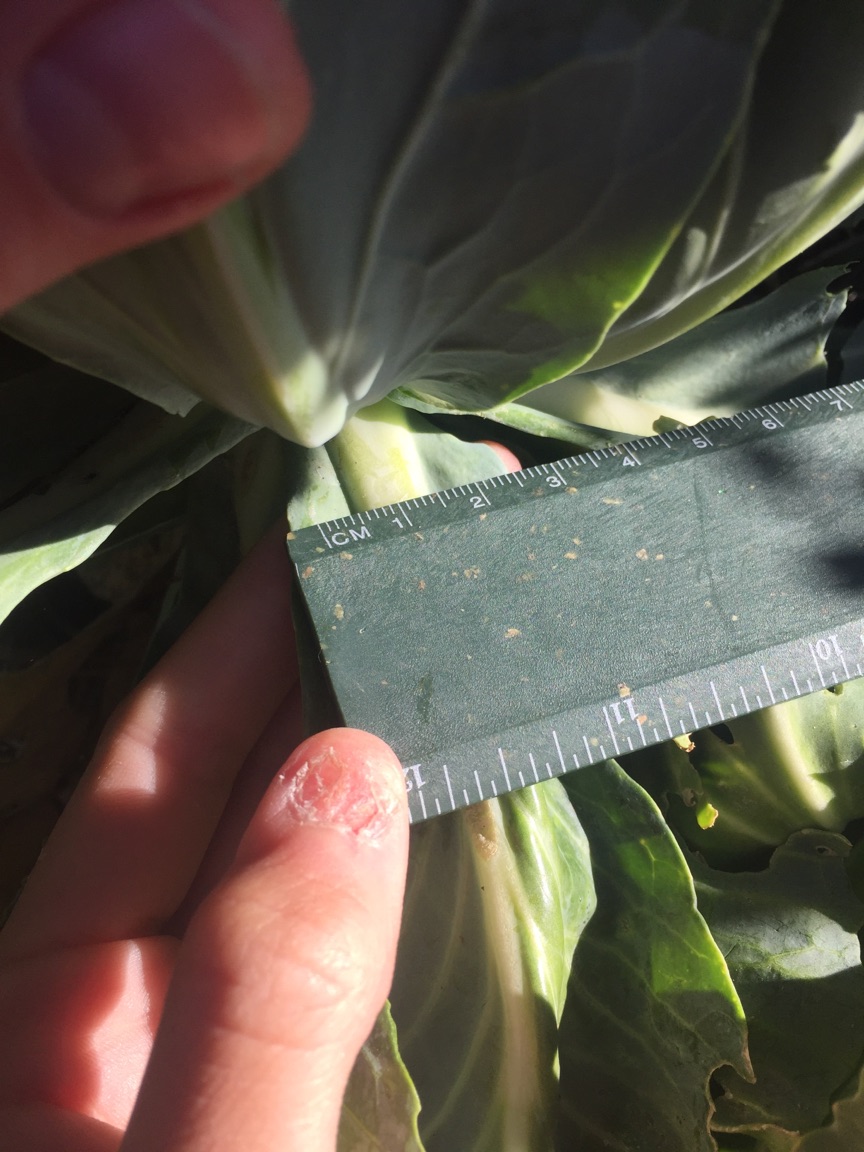
4) What would plant breeders have to do in order to get the body part or characteristic you described above (in your response to question #3) to become much different than it is presently?
There is also a large variability in Brassica Oleracea through natural variations. This is because of how it represents genetic diversity. If organisms have natural variations, while changing, if breeded with another plant, it will increase a variety of different plants. Through natural variation, it isn't harmful, but could be good for the organism. It will expose the organism to different things, and could quite possibly help the plant if it has to adapt in different conditions. This is why the changes in natural variation creates a variety in Brassica Oleracea, but it depends, as sometimes it can help a plant, but other times, it could put the life of a plant at risk.
Finally, through mutations, it is shown that there is a large variability of Brassica Oleracea included. This is because of how mutations can change the genes and create an unusual part of the genes. This may effect the phenotype, and genotype, but it creates variety because if all plants are supposed to turn out the same, a mutation can show the difference between itself and another plant. If it keeps on reproducing, that plant is increasing the chances of its new plants getting the mutation. This spreads the change of genes, so that plants don't always have the same outcome. Although it may be seen through our Brassica Oleracea, it is part of all living things including humans, animals, and other organisms.
3) Which part (anatomy) of the Brassica Oleracea plants seems to be most consistently the same in all of the examples in our garden, regardless of how extreme the differences between other parts of the same plants may be? Why do think this is so? Again, use and include data collected from multiple measurements to support your answer.
In the anatomy included in our Brassica Oleracea, the stem widths seem to consistently be the same in most of the plants. I think this because even though they will continuously grow longer, the widths mainly stayed the same and were very similar when comparing. This is because or how the width of the collard stem is 0.4 centimeters, the cabbage stem's width was about 2.5 centimeters, the brusselsprout's stem width is 0.6 centimeters, and the stem of the kale plant was 0.8 centimeters wide. Although the cabbage plant showed a much larger stem width, most of these plants had similar stem widths and throughout this whole experiment, they have mainly stayed the same.
4) What would plant breeders have to do in order to get the body part or characteristic you described above (in your response to question #3) to become much different than it is presently?
In order for it to become much different than it is presently, there can be a variety of things that plant breeders can do. One of the actions they can take is to spray these plants with pesticides or chemicals. These can be very dangerous and unhealthy for both the plants itself, and the humans that will eat the plants in the future. Although this may be, the whole entire plant including the part listed above about the stem widths will grow much larger, but if overloaded with chemicals, it may grow smaller and start to die. As you can probably tell, this is not the safest option. Another option though, a lot better I might add, would be to consistently keep a balance of sunlight and water constantly on the plants to help the plant reproduce and thrive. Another bad option that would indeed make the plant smaller would to not touch it at all or expose it to any factors that would help it, leaving the plant to die. Even though it is not good for the plant, it does in fact make the plant look different that what is currently in our school garden.

Comments
Post a Comment